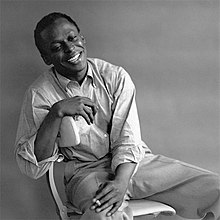Piano Sheets > Miles Davis Sheet Music > Seven Steps to Heaven (ver. 2) Piano Sheet
Seven Steps to Heaven (ver. 2) by Miles Davis - Piano Sheets and Free Sheet Music

About the Song
Other avaliable versions of this music sheet: Version 1 Version 2
Seven Steps to Heaven is an album recorded in 1963 by Miles Davis. On the 16th and 17th of April, a quintet comprising Davis, George Coleman, Victor Feldman, Ron Carter and Frank Butler recorded all six tunes plus "Summer Night", for an album to be titled So Near, So Far. A month later, Davis re-recorded three of the tunes (tracks 2, 4 & 6) with a new quintet, replacing Feldman with Herbie Hancock and Butler with Tony Williams. The new rhythm section of Hancock, Carter and Williams would form the nucleus of Davis's working band for the next five years. This is the last of Davis's studio albums which relies substantially on standard tunes - once Wayne Shorter joined the quintet in 1964, tunes on studio recordings were almost always composed by members of the group.
By early 1963, Miles Davis was still casting for a new band and this recording accurately reflects Miles' search for his "new sound.".
Download this sheet!
About the Artist

Random article
Advantages of accessing free sheet music online The internet has pervaded all aspects of our lives and when it comes to learning how to play piano this is no different. There are virtually hundreds of websites, which offer you free sheet music to help you learn how to play the piano. There are several advantages to getting online sheet music versus conventional hard copy versions.
No storage issues
One of the biggest advantages is that online sheet music does not occupy physical space as documents do. This helps you avoid unnecessary clutter
(More...)
